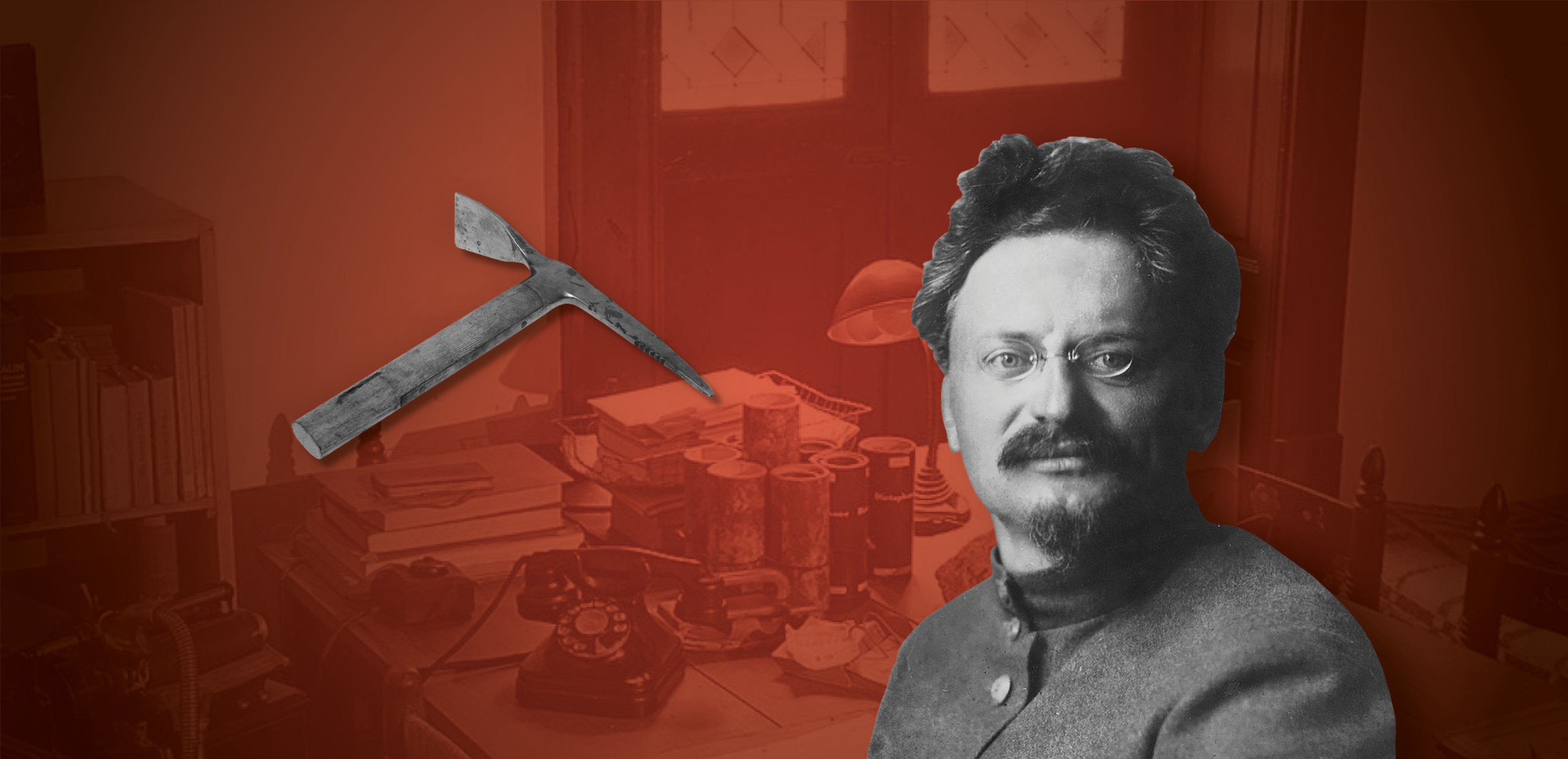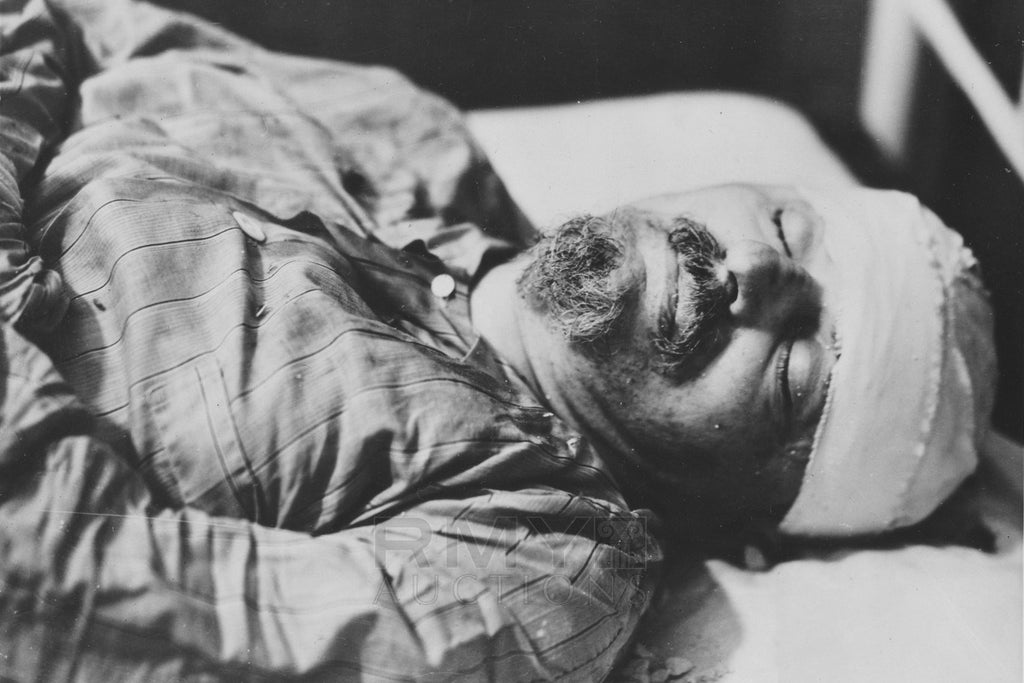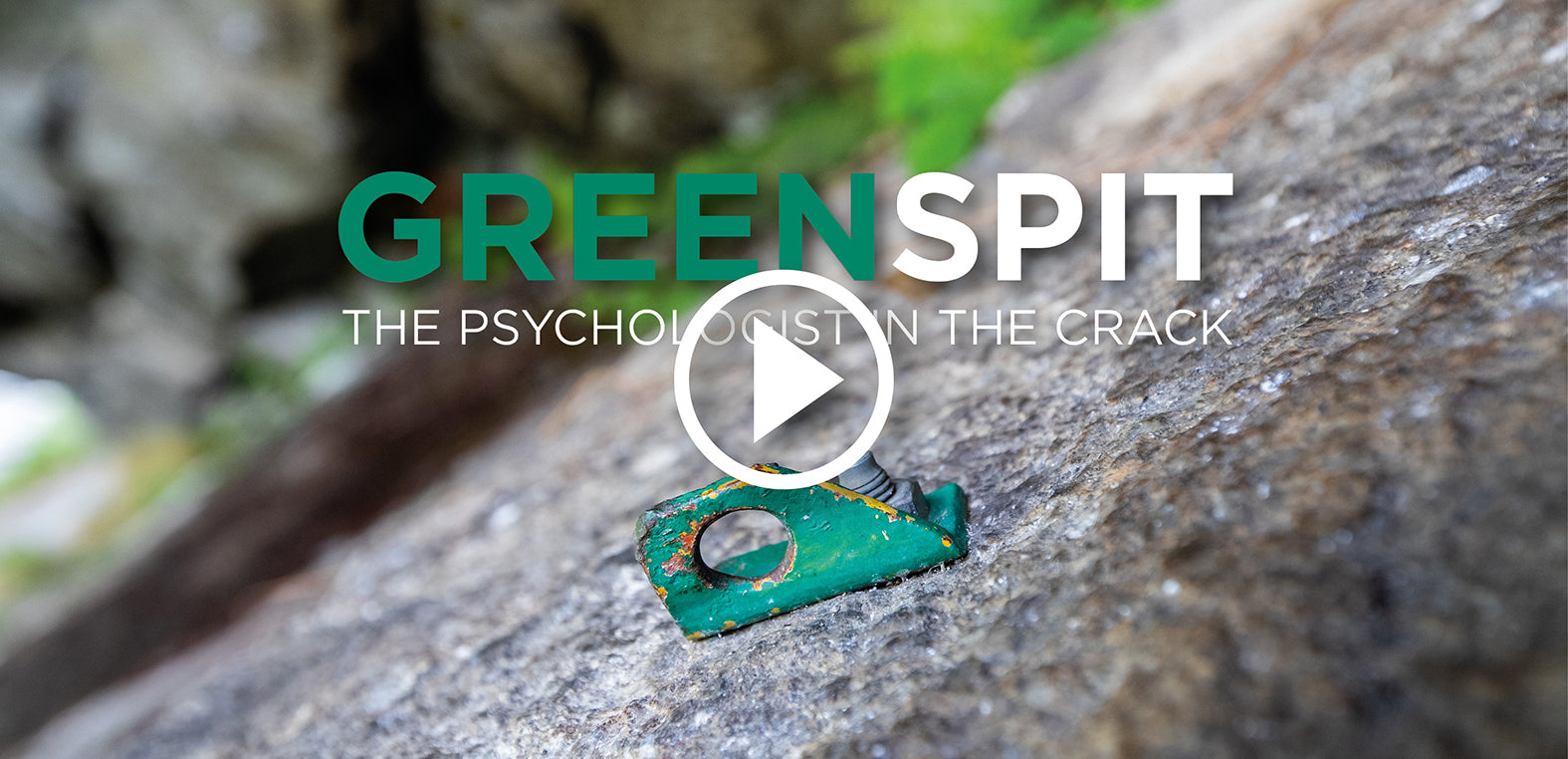
The revolutionary, the killer and the ice axe by Marina Morpurgo
Published on 09/07/2021
It is a just after 6 pm on the 20th of August 1940, when an ambulance arrives at Avenida Rio Churubusco in the suburb of Coyoacán in Mexico City, and rescuers enter in a house that is a kind of fortress protected by armed guards.

In the studio, they find a lot of blood everywhere, desperate people, and a seriously injured man: the shovel of a mountaineering ice axe broke through the parietal bone, lacerated his meninges, and penetrated several centimeters into the right side of the brain, remaining stuck there.

There is also another wounded man, less serious but still battered: he is the aggressor. The victim who did not immediately faint but had several minutes of lucidity, in which he tried to defend himself despite being already semi-paralyzed, bit him in the hand, planting his teeth in his flesh - a sign he will carry forever. The man also bleeds from the head, because the guards of the house, recalled by the chilling scream of the attacked one, entered the room and started hitting the intruder with the gun grips, until the man with the skull smashed by the ice axe order them to stop, because if they kill him, no one will ever know who is he and why he is there.

The ambulance transports both the injured to the Cruz Verde hospital and the activity at the bedside of the dying man - because his condition immediately appears desperate - is hectic, with the best doctors scrambling to save him, and a plane ready to leave from the United States, with a neurosurgery luminary on board. He is not an ordinary patient: he is Lev Trotsky, the former commander of the Red Army, the hero of the revolution and of the civil war, who has now become the thorn in Stalin's side, who has made a vacuum around his rival, forcing him to flee from one country to another and pursued by a death sentence issued by the paranoid and ruthless bureaucrat.

Trotsky, who in 1927 was expelled from the central committee of the party, has been in exile for twelve years: he was in Kazakhstan, then he went to Turkey where, however, the old enemies of the past, the diehards of the White Army, threaten him with death. He then moved on to France, where he was admitted on condition that he stay away from Paris, but Stalin's pressure did not stop.
He was then accepted by Norway, but he also had to leave from there, after being placed under home detention agreement. Stalin does not want him so close to the borders, and for governments to host Trotsky, the eternal revolutionary, the sentenced to death awaiting an execution that is unlikely to escape, becomes increasingly risky and politically difficult. A helping hand finally came from Mexico, the only country still willing to grant him a visa.

The President Lázaro Cárdenas is an old revolutionary and a reformer, and he welcomed the request of the communist painter Diego Rivera: let’s invite Trotsky to stay with us. They made him travel in great secrecy on an oil tanker, fearing that the ship would be blasted or attacked in the open sea - but it was all right, on the 9th of January 1937, Trotsky and his family arrived to Mexico, here they have friends, admirers, people ready to defend them.
But now Trotsky is dying in the hospital bed. The surgical operation, however timely, did not help, the adze of the axe (Trotsky was hit with an Austrian tool produced in Fulpmes, Stubai, at the end of the 1920s: it is a modern ice axe, in the hands of the mysterious killer, who claims to be a skilled mountaineer, a circumstance never proven) has penetrated so deeply that only a very radical intervention, with the opening of a very large portion of the skullcap, could perhaps save him, even if the neurosurgeons of the 21st century are not at all certain.

The latest photographs of one of the most the prestigious leaders of the Russian revolution recall the Mantegna's Christ: the face is serene, the head slightly tilted to the side. Trotsky survived the attack for 25 hours: on 21 August at a quarter past seven in the evening his death was declared.

He is 60 years old and has already suffered numerous deaths, among his companions many have been killed or have taken their own lives. His son, Lev Sedov, also died under mysterious circumstances in Paris in 1938, and it is suspected that he was poisoned by Stalin's agents.

Now the focus is on the killer. No one seems to have doubts on who is the instigator of the murder. Just a few months earlier, on May 24th, a commando of armed men which included the Communist painter and famous mural author David Alfano Siqueiros, loyal to Stalin, stormed Trotsky's villa trying to eliminate the founder of the Fourth International: the shooting lasted a long time, hundreds of shots were fired, Lev, his wife Natalia Sedova and his nephew Seva threw themselves under the beds and remained unharmed. Since then, surveillance had been intensified.
But who is the man with the ice axe, and how did he get into that super-protected fort? He introduced himself to Trotsky's family and guards as Frank Jacson from Toronto, a Canadian citizen. But he also has other documents, this time in the name of a certain Jacques Mornard, a Belgian businessman born in Iran, bon vivant with leftist ideas. It will take years and years before the true identity of the man locked up in the Palacio Lecumberri prison, where he is serving the twenty-year sentence imposed on him for the murder, will be discovered.

It seems incredible that a semi-unknown with a smoky and uncontrollable past managed to come face to face with Trotsky, in his studio, with three lethal weapons hidden under his jacket and in the pockets of the raincoat he wears on his arm, despite the good weather and the hot: the ice axe whose handle he sawed in half, a dagger and an automatic pistol. Jacson-Mornard has been frequenting the villa for some time and knows that Trotsky is against the search of the guests. He had an easy game: he asked the "old man" (as they affectionately call him) to read and correct a political writing, and while Trotsky was bent over and absorbed, he pulled out his ice axe, delivering that single frightening blow, with which he hoped to kill him silently and instantly.

This did not happen, and the victim screamed: the guards were in another room, however, and arrived after the tragedy occurred.
A woman, Sylvia Ageloff, an American Trotskyist from the Socialist Workers Party who became Trotsky's secretary, guaranteed access to the hitman in Rio Churubusco.
And here we come across one of the many mysteries of this thriller that only with the passing of many decades and the opening of the archives will take on the contours of a vast international conspiracy.

Sylvia Ageloff is for a long time referred to as the "poor little Sylvia", a fragile and naive militant bordering on idiocy, an ugly girl in need of affection and skillfully seduced by the handsome Mornard (a big dark man with an actor's face and thick wavy hair) who approached her in Paris in 1938, and who soon became her life partner, a companion of sure Trotskyist faith.
Realizing that she had cleared the way for the murderer, who with the excuse of discussing politics with Trotsky has entered the fortress of Coyacan several times despite not inspiring sympathy and trust in the hosts, Sylvia is desperate and amazed, responding with hysterical crises at the questions of the Mexican investigators, who initially consider her an accomplice to the murder. Only in the seventies it emerges from the papers that the American Trotskyists who dealt with Lev's security had been heavily infiltrated by the men of Stalin's secret police, and the figure of "little Sylvia" takes on much more disturbing contours: a woman who still had a family in Russia, and was therefore blackmailable, and was aware of the dark sides and oddities of her "boyfriend".
In prison, Jacson-Mornard does not make and will never make any revelations about the background of the murder.

No one will know until 1953 that his real name is Ramón Mercader, a Spanish man who grew up in France - where he would have learned to perfection, he says, the use of the ice axe for carving steps in the ice - the son of a communist militant and former fighter in the Spanish civil war (Ramón Mercader also has a sister, Maria, who is an actress and marries the Italian film director Vittorio de Sica: from their union, Christian De Sica was born).

Trotsky's killer was released in 1960, after several failed attempts to get him released from prison, countered by the Mexican government. Awarded the title of War Hero of the Soviet Union, he goes to live first to Moscow under another false name and then to Cuba, where he works for Fidel Castro. Throughout his life, he receives money on whose origin there is no doubt.
He died in 1978 in Havana, then was buried in the Kuntsevo cemetery in Moscow: on the grave, it is written: "Lopez Ramon Ivanovic".

The ice axe of the crime, which as we have said earlier perhaps really belonged to Mercader for years, or perhaps the killer had stolen it from one of the houses that had housed it, has remained in the shadows for decades: an agent of the Mexican secret police, Alfredo Salas, took it from the evidence warehouse, claiming he wanted to preserve it for posterity, and entrusted it to his daughter Ana Alicia, who kept it under the bed for 40 years, until in 2005 he decided to sell it. It was purchased for an unknown sum by the American collector Keith Melton, founder of the International Museum of Espionage in Washington, which today houses the historical artifact, an extraordinary and macabre case of an ice axe that became famous for non-mountaineering reasons.


Marina Morpurgo, after working as a journalist became a literary translator from English and author of history books for schools. She has published fiction and non-fiction for children with Feltrinelli, and short novels and stories with the Astoria publishing house. The latest fiction book "È solo un cane (dicono)” was re-released in extended edition in 2020.
Portrait © Gli Sfacciati


